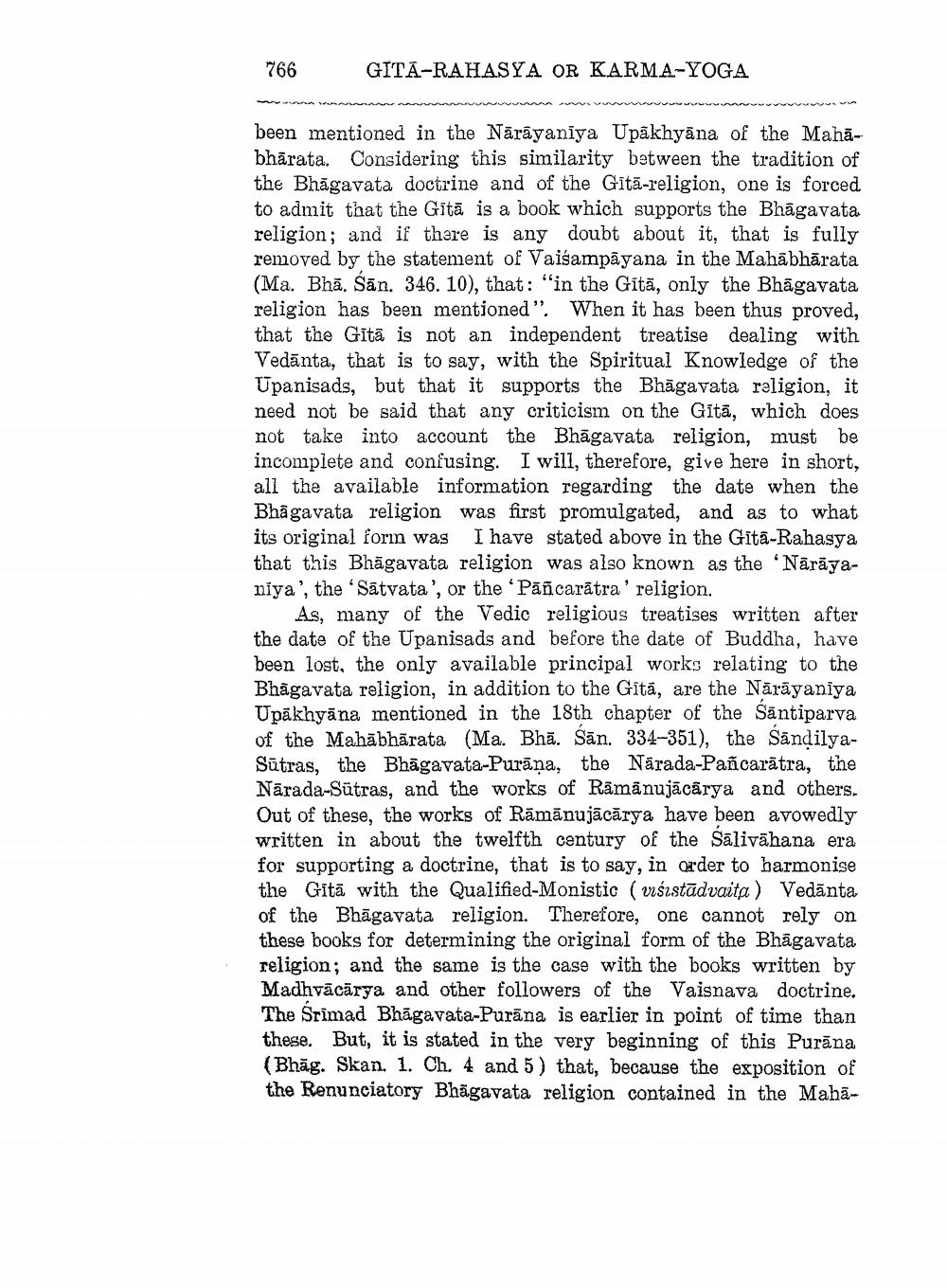________________
766
GITA-RAHASYA OR KARMA-YOGA
been mentioned in the Nārāyanīya Upākhyāna of the Mahābhārata. Considering this similarity between the tradition of the Bhāgavata doctrine and of the Gītā-religion, one is forced to admit that the Gitā is a book which supports the Bhāgavata religion; and if there is any doubt about it, that is fully removed by the statement of Vaišampāyana in the Mahābhārata (Ma. Bhā. Sān. 346. 10), that: “in the Gītā, only the Bhagavata religion has been mentioned". When it has been thus proved, that the Gītā is not an independent treatise dealing with Vedānta, that is to say, with the Spiritual Knowledge of the Upanisads, but that it supports the Bhāgavata religion, it need not be said that any criticism on the Gītā, which does not take into account the Bhāgavata religion, must be incomplete and confusing. I will, therefore, give here in short, all the available information regarding the date when the Bhagavata religion was first promulgated, and as to what its original forin was I have stated above in the Gītā-Rahasya that this Bhāgavata religion was also known as the 'Nārāyaniya', the "Sātvata', or the ‘Pāñcarātra' religion.
As, many of the Vedic religious treatises written after the date of the Upanisads and before the date of Buddha, have been lost, the only available principal works relating to the Bhagavata religion, in addition to the Gītā, are the Nārāyaniya Upākhyāna mentioned in the 18th chapter of the Säntiparva of the Mahābhārata (Ma. Bhā. Sān. 334-351), the SāndilyaSūtras, the Bhagavata-Purāna, the Nárada-Pañcarātra, the Nārada-Sūtras, and the works of Rāmānujācārya and others. Out of these, the works of Rāmānujācārya have been avowedly written in about the twelfth century of the Salivāhana era for supporting a doctrine, that is to say, in order to harmonise the Gitā with the Qualified-Monistic (vrśzstādvaita ) Vedānta of the Bhāgavata religion. Therefore, one cannot rely on these books for determining the original form of the Bhagavata religion; and the same is the case with the books written by Madhvācārya and other followers of the Vaisnava doctrine. The Srimad Bhāgavata-Puräna is earlier in point of time than these. But, it is stated in the very beginning of this Purāna (Bhāg. Skan. 1. Ch. 4 and 5 ) that, because the exposition of the Renunciatory Bhāgavata religion contained in the Mahā




